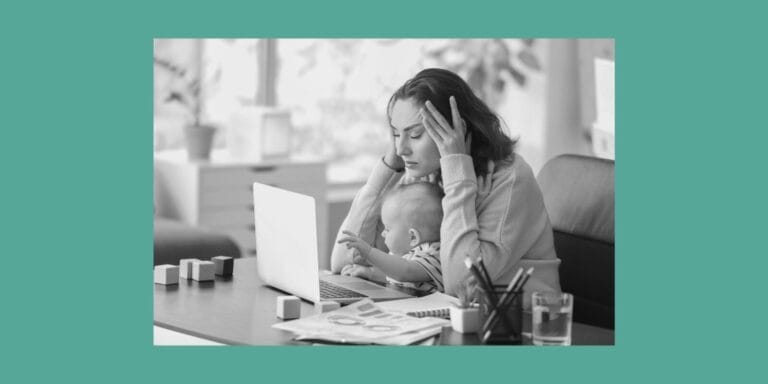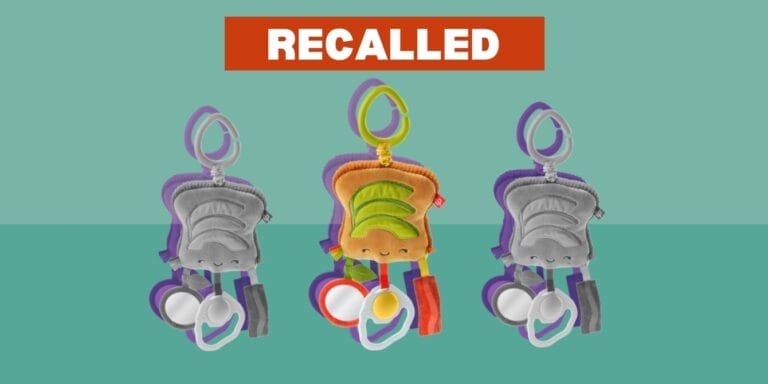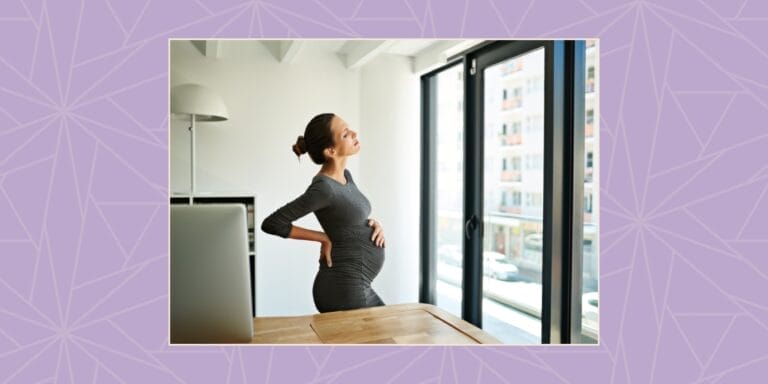Moms are multitasking more than ever before and it’s burning us out

We can't keep this up forever.
Table of Contents
Before the pandemic moms were already multitasking too much. Motherhood and multitasking are so linked in our culture that it can feel like a superpower, and years of news headlines about women’s supposedly superior multitasking skills have reenforced this by suggesting that women are better at multitasking than men are. But the science has shown that we are not. We are no more better suited to multitasking than men are, and the pandemic is forcing us to do more of it than ever before. New research suggests mother s in heterosexual marriages are now multitasking to the point of burning out—and this could create another crisis while we’re already dealing with COVID-19. We can’t afford to let America’s moms, the ones who are holding families and households together during the fight against coronavirus burn out. We need to address this now, because we can’t afford to adhere to outdated gender norms in this economy. Moms are increasingly the breadwinners in American families, but still have to fight the perception that a father’s job is the most important one in the household.
“In a lot of cases, gender trumps money,” researcher Kristin Smith who wrote her Ph.D dissertation on the topic of gender roles tells CNN. “Our social roles are so much more powerful in decision-making than money.” It’s hard to fight those social roles, and even dads who consider themselves feminists may leave certain things to a multitasking mom because of ingrained cultural norms. We learn how to feed the baby while cooking dinner because the children are hungry. We learn how to shower while simultaneously entertaining a toddler because even dry shampoo has its limits. We learn how to answer emails with one hand while serving breakfast with the other while simultaneously tracking down lost shoes because there is no other choice. And while dads do learn to multitask, the average mom does about 10 hours more multitasking per week than her male partner (and those are pre-pandemic numbers) and it’s why fathers are, in general, happier than moms. But we also know that they want to share that happiness and be more equal parents, but feel gender norms are holding them back. The pandemic is forcing so much unfortunate change on American families, but there is one kind of change that could be good by helping moms multitask less and giving dads the space to be full parents.
Work is still work even when it isn’t paid
It is unfair to say that nothing has changed for stay at home parents, because they are doing more than ever before. When moms are not engaged in paid work they are often expected to do the majority of the childcare, but with many working partners now at home now is a chance for them to get more involved with the caregiving (and take some responsibilities off mom’s plate). Stay at home parents’ workloads have increased at the same time as stress, anxiety and financial pressure have. Now is the time for partners to come together and have serious conversations about managing workloads. Everyone needs a break, even mom. Just because you’re used to being an at-home parent does not mean you are used to this much pressure and the constant demands of raising children without childcare, school or social support.How moms and dads can prevent a family breakdown by pivoting to “breadsharing”
Moms can’t keep going at the pace they are. Many are working from home right now while attempting to homeschool and manage most of the childcare duties. There are only so many hours in the day and moms are burning out. As Michelle P. King , author of The Fix: Overcome the Invisible Barriers That Are Holding Women Back at Work writes for Working Mother , ” The Pandemic is the Perfect Time for Men to Embrace ‘Breadsharing’ Instead of Breadwinning.” In that piece King explains that this lockdown is giving us the opportunity for a cultural reset that frees dads from the confines of the breadwinner identity and frees moms from content multitasking.”[M]anaging the integration of work and home life has never been more challenging. And it’s falling disproportionately on women, who remain the default caretaker, teacher and chef, regardless of whether they also have a job,” King writes. Now is the time to change the dynamic by doing what Jules Barrueco suggests in her piece for InStyle : Admit that Mom’s career is just as important as Dad’s. This means that sometimes moms are going to have to draw a line on how much multitasking we can do and demand our partners do some, too. “[S]ometimes advocating for the future of your career means standing before your partner with knots in your hair, with only five and a half painted toenails, wearing a pajama-outfit you’ve been wearing for one day too many, asking him to change the damn diaper because you’re in the middle of a project. It means telling him you have an important call, so his fourth of the day will simply have to wait. It means handing him the plunger and letting him worry about what’s happening on the other side of that door,” Barrueco writes.The workday is now 3 hours longer—this isn’t sustainable for parents
 Moms have less time to themselves than ever before, and what we’re doing right now (working remotely while also trying to teach fourth grade science) isn’t flexible work, it’s crisis mode.
People working from home are working three hours longer per day than before the pandemic, Bloomberg reports, in part because we’re always online and also thanks to constant interruptions from children.
As CNBC reports, NordVPN recently did an analysis of the activity on its network and found that since mid-March the average worker in the Unites States is working three hours more per day, and that in the U.K., France, Spain and Canada, people are working two hours more per day than they did pre-pandemic.
This one-hour difference suggests U.S.-based workers may feel particularly overwhelmed right now and that companies, communities and leaders at every level need to consider new ways to support work-life balance in this time.
For moms especially, dealing with childcare, distance learning and work can mean the day never ends and that work is constantly interrupted.
Rachel Mushahwar, the vice president and general manager of U.S. sales and marketing at Intel, tweeted: “My 14 year old is taking French class in bed, my 12 year old is asking for food I don’t have, my 10 year old is refusing to read, and my 8 year old is in my lap while on calls learning to multitask.”
Mushahwar is obviously very good at multitasking, but that’s also a recipe for burnout.
It’s time for a conversation about moms and multitasking, because the truth is we’re not any better at it than anyone else, we’re just forced to do it. And we can’t keep this up forever.
Moms have less time to themselves than ever before, and what we’re doing right now (working remotely while also trying to teach fourth grade science) isn’t flexible work, it’s crisis mode.
People working from home are working three hours longer per day than before the pandemic, Bloomberg reports, in part because we’re always online and also thanks to constant interruptions from children.
As CNBC reports, NordVPN recently did an analysis of the activity on its network and found that since mid-March the average worker in the Unites States is working three hours more per day, and that in the U.K., France, Spain and Canada, people are working two hours more per day than they did pre-pandemic.
This one-hour difference suggests U.S.-based workers may feel particularly overwhelmed right now and that companies, communities and leaders at every level need to consider new ways to support work-life balance in this time.
For moms especially, dealing with childcare, distance learning and work can mean the day never ends and that work is constantly interrupted.
Rachel Mushahwar, the vice president and general manager of U.S. sales and marketing at Intel, tweeted: “My 14 year old is taking French class in bed, my 12 year old is asking for food I don’t have, my 10 year old is refusing to read, and my 8 year old is in my lap while on calls learning to multitask.”
Mushahwar is obviously very good at multitasking, but that’s also a recipe for burnout.
It’s time for a conversation about moms and multitasking, because the truth is we’re not any better at it than anyone else, we’re just forced to do it. And we can’t keep this up forever.


































